- Commonly Questioned Weeds of Quay County
PDF of weeds presentation at the 2016 Weed Management Workshop
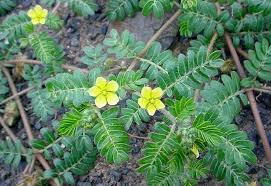
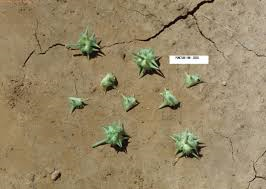
Description: Puncture vine is an annual herb growing flat along the ground, from a simple, woody taproot.
-
Small yellow flowers are borne on short stalks, 5 petals, 5 sepals and 10 stamens.
-
Leaves are opposite, oblong and have short stalks. They are 1 to 3 inches long and pinnately compound (having leaflets). Each leaflet is 1 / 4 inch long.
-
Stems are numerous and up to 6 feet long. They form a dense mat.
-
Seeds are a woody burr with sharp, rigid spines.
-
Found in pastures, roadsides, waste places, parks, agricultural areas.
Treatment: Control plants prior to seed production with a hoe or shovel, herbicides are effective
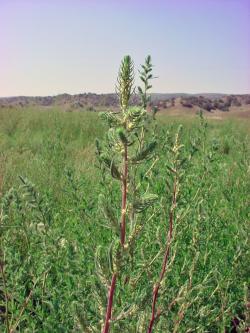

Description: Annual herbaceous plant with a deep taproot. Grows 1.6 to 4.9 feet tall.
-
Flowers small and green, grouped in clusters in the upper leaf axils and on terminal spikes
-
Stems are upright, spreading with many branches, hairs on the upper parts of stems, sometimes tinged red
-
Leaves are alternate arranged, 1 to 2 inches long, narrow to lance shaped with smooth, hairy edges and may have silky hairs on undersides
-
Seeds form a small inflated seed bearing structure that are wedge-shaped and light brown and can produce around 15,000 seeds per plant, in fall plants disperse similar to tumbleweeds
-
Found in pasture, rangeland, roadsides, ditch banks, wastelands and cultivated fields
Treatment: Mowing or slashing the plants before flowering, Early tillage in the spring, herbicides are effective
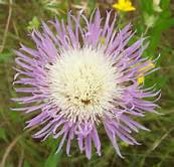
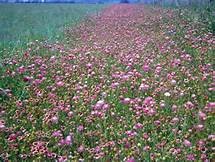
American Basket Flower
Description: Annual, erect plant, up to 6 ft tall Flowers are 4 inches in diameter with pink petals and a cream colored center looks somewhat like a thistle No prickly characteristics like thistles Flowers May - August Leaves are rough 4 inch long lanced shaped The common name comes from the underside of the inflorescence which looks like a basket weave pattern
Habitat: Sandy to loamy-clay soil, roadsides, disturbed areas, overgrazed pastures Highly cultivated in the Southwest and Central US Livestock / wildlife Very little value for either

